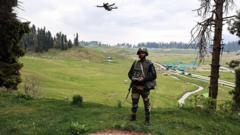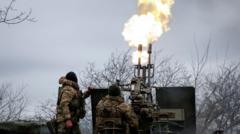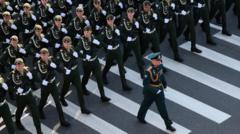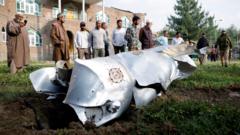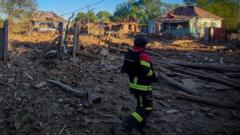The year 2024 saw Russia experience its highest military casualties in the Ukraine war, with at least 45,287 soldiers killed. This staggering figure surpasses previous years, revealing a trend of increasing losses amid continuous fighting, particularly in contested regions.
Russia Faces Unprecedented Military Casualties in Ukraine Conflict
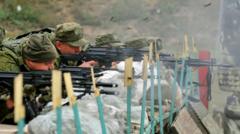
Russia Faces Unprecedented Military Casualties in Ukraine Conflict
Record losses in 2024 surge as Russian forces face ongoing challenges in the Ukrainian frontline, leading to an alarming death toll among soldiers.
Last year proved catastrophic for Russian military forces in Ukraine, with reported casualties soaring to 45,287 soldiers dead. This figure marks nearly a threefold increase over the prior year's toll, driven in part by fierce battles, most notably in Bakhmut. In terms of territory gained, Russian troops encountered a disheartening average of 27 fatalities for every square kilometer acquired, signaling a devastating human cost behind their tactical maneuvers.
This grim assessment emerges from a collaborative investigation by the BBC Russian Service, independent outlet Mediazona, and volunteers, combing through open-source resources, including obituaries and cemetery records. Though they have confirmed the identities of 106,745 soldiers, experts believe this accounts for merely 45% to 65% of actual deaths, suggesting a more realistic figure could lie between 164,223 and 237,211 fatalities.
One of the darkest days for Russian forces occurred on February 20, 2024, when 201 soldiers lost their lives after four Ukrainian missiles struck a training ground in Volnovakha, Donetsk. Among the dead were young soldiers like Aldar Bairov and Okhunjon Rustamov, both of whom had limited military backgrounds before being thrust into combat.
In the first two years of the war, Russian losses were characterized by cyclical spikes during intense fighting periods, but 2024 has marked a continuous uptick in casualties. Catastrophic losses were documented during assaults in Avdiivka and Robotyne, as well as a notable uptick in deaths from August 6 to 13, when Ukrainian forces engaged Russian positions in the Kursk region, resulting in 1,226 fatalities.
Despite a grim tally, Moscow has continued to boost recruitment efforts, employing financial incentives to replace its dwindling ranks. A rise in contract soldiers and volunteers has been witnessed, many of whom receive significantly higher wages compared to local averages, spurring an influx of volunteers amid combat losses. However, many recruits arrive on the battlefield with minimal experience, drastically heightening the risks to their safety.
Analysts note that the actual number of Russian casualties may be even higher, as several bodies remain unaccounted for on the battlefronts, complicating the narrative around troop losses. Furthermore, the casualty figures also reflect those fighting in proxy battalions from the self-proclaimed Donetsk and Luhansk People's Republics, which would further inflate the toll into troubling territory, potentially exceeding 260,000 military personnel killed. As the war grinds on, the Kremlin grapples with the dual challenge of sustaining military engagement and managing the mounting human cost of its campaign in Ukraine.




